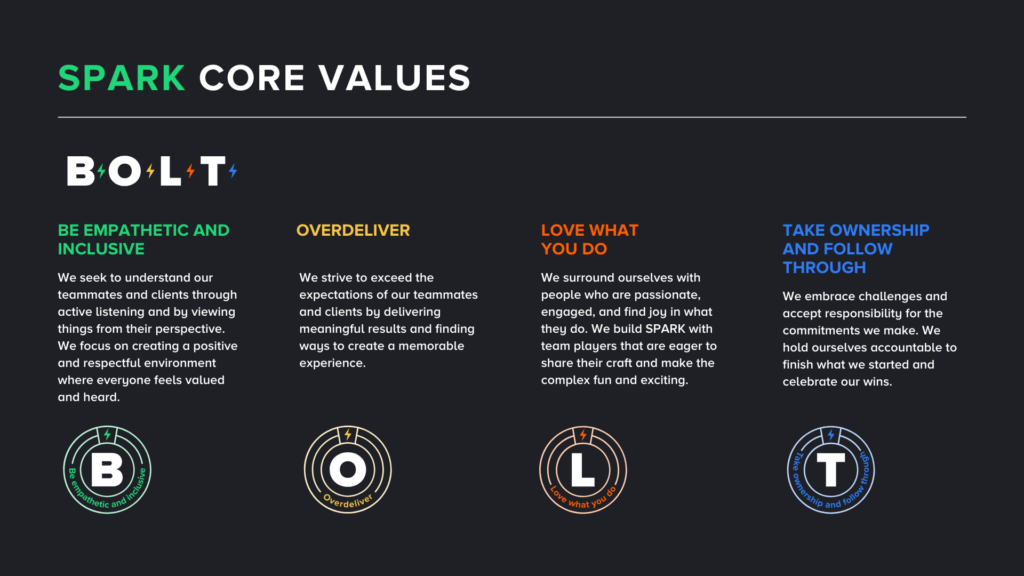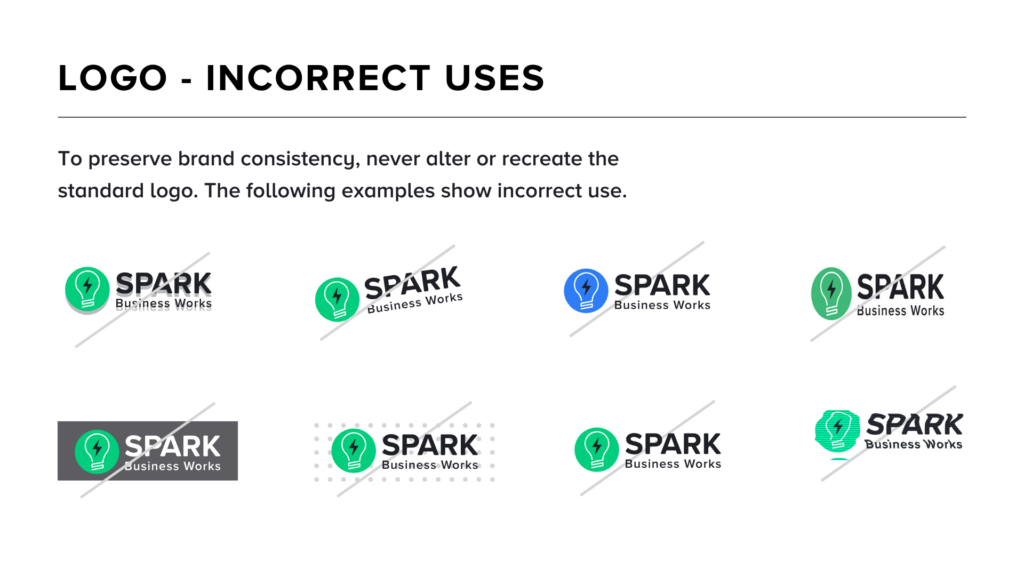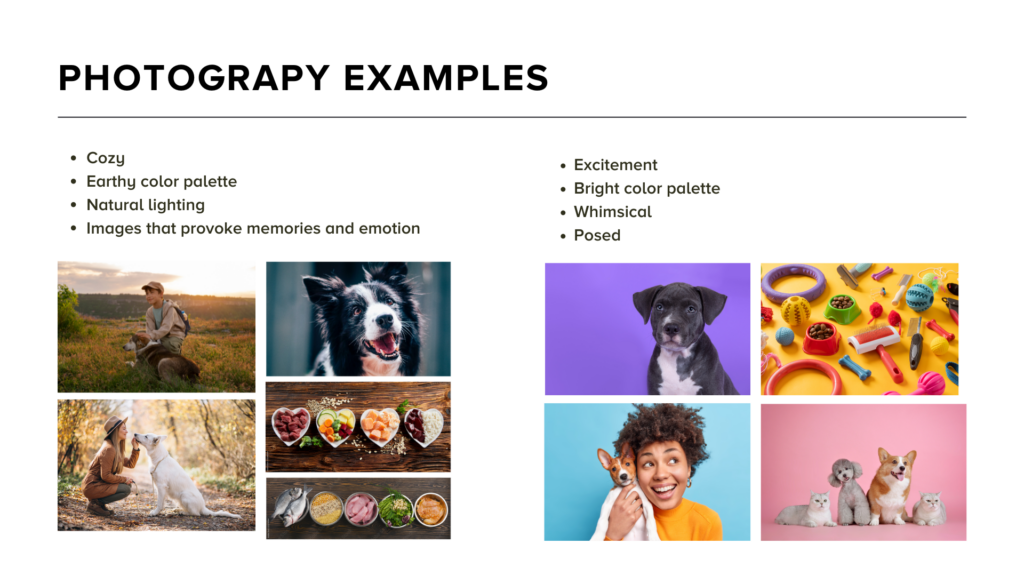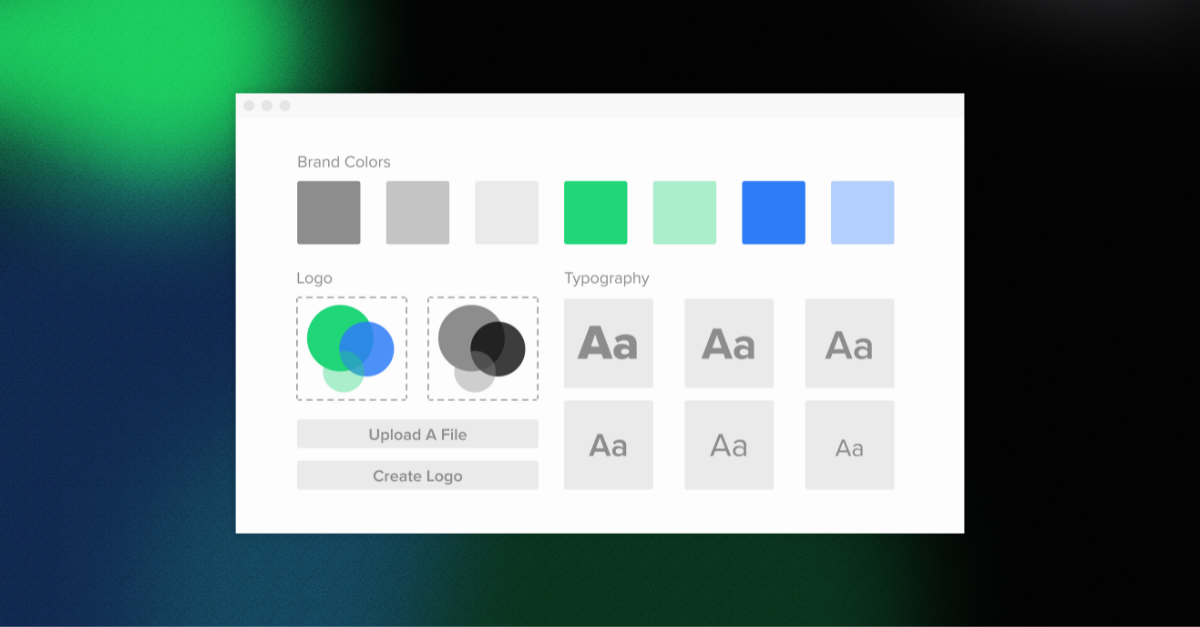A brand is not a logo or a catchy tagline; it is a persona your customers connect with. This persona is not only someone for your customers to meet, but it’s who they recognize and remember.
In essence, your brand is the psychological aspect of your business that creates a lasting impression on your audience. Whether you’re a startup or a well-established enterprise, a strong, memorable brand can build trust, foster loyalty, and drive customer engagement.
But businesses often overlook ensuring their brand identity stays consistent across all the different touch points with customers– from social media to print materials and customer support.
What’s the best way to drive brand consistency? Creating and adhering to brand guidelines.
What is a Brand Style Guide?
A brand style guide is a comprehensive document that outlines the essential elements of your brand –from your logo and brand colors to the tone of voice you emulate when communicating.
Your business doesn’t need a brand style guide to be successful, but all successful businesses utilize a brand style guide. Here’s why: it provides a roadmap for your stakeholders and ensure that every interaction with your brand reflects the core values and persona of your business. It reinforces your brand’s position and builds trust in the minds of both current and potential customers.
Who Is A Brand Style Guide For?
It should be shared with all stakeholders who play a role in representing your brand. They can be:
1. Internal Stakeholders
It’s essential to share the brand style guideline with all your employees, from the top-level management to entry-level staff. Training your employees on the brand elements and providing them access to the guide equips them with a clear understanding of how to use the brand’s visual and verbal elements, ensuring that all communication and interactions are in harmony with the established brand identity.
Think of your brand guide as a beacon that guides your employees on how to embody your brand identity and integrate it into their daily work.
2. External Stakeholders
Your brand style guide can also be shared outside your organization like with partners, contractors, or third-party vendors. No matter who is creating content or using visual aspects of your brand, you can ensure everyone has the same materials and guidelines.
For example, let’s say you’re working with a vendor to run a digital ad campaign. As they set up your campaign, you can send them your brand guide so they aren’t left to wonder (or worse: make up) what messaging or visual ads to create. Following your guidelines makes the creation process smoother and faster for both sides.
SPARK tip: Create a separate, smaller version of your brand style guide that is exclusively used for vendors and partners.
The Building Blocks of a Brand Style Guide
You can make your brand guidelines unique to the needs of your business, but there are some essential items you likely need to include:
1. Company Description
Including a concise overview of your company and its purpose sets the stage for the rest of the guide. It also gives you the chance to introduce your overarching brand identity.
2. Brand Values
Articulating the core values and mission of your brand provides a framework for how your brand values should be communicated and reflected in all brand interactions– both visual and written.

3. Tone of Voice
Your brand’s personality is expressed through your tone of voice, which helps you resonate with your target audience. Do you want to be perceived as professional and technical? Or is your brand down-to-earth and humorous?
SPARK tip: Including examples, like approved words and phrases, helps stakeholders understand how to speak and represent your brand’s personality.
4. Logo
Your logo is the visual cornerstone of your brand. Your style guide should provide explicit guidelines on the dos and don’ts of how to showcase your logo. When your logo isn’t presented correctly, it can confuse your customers and dilute your brand’s identity.
For example, SPARK works with industrial clients that often drive work vans to provide their services. What if one of those vans has the wrong logo and tagline on the side? Would a customer trust that they’re working with the right company?
SPARK Tip: When working with external stakeholders, logo instructions and lockups are especially important so you don’t end up with manipulated or unrecognizable versions of your logo out in the marketplace.

5. Brand Colors
The color palette you choose reflects the personality and mood of your brand. Consistent use of colors across all platforms and design elements helps build instant recognition and emotional connection with your audience.
Further, by specifying primary and secondary brand colors, along with their exact color codes (CMYK, RGB, and HEX), the guideline ensures consistent usage across all marketing materials and platforms.
SPARK tip: You likely need different color standards for print materials versus web or digital content. Different color codes can help stakeholders choose the correct color based on the medium they’re using.
6. Typography
Similar to brand colors, identifying your typography also reinforces brand recognition. Fonts should align with the brand’s personality and be easily readable across different mediums. Be sure to define the primary and secondary typefaces that can be used across various communications.
SPARK tip: Depending on the font type, you might need to provide your stakeholders instructions on where and how to download the correct fonts so they can be used across different programs.
7. Iconography and Graphics
Using icons, graphics, and illustrations is a fun way to define your visual identity. You can establish standards for the size, color palette, and style of icons and graphics to maintain uniformity across all brand materials.
SPARK tip: Some brands might find it helpful to use a “creative scale” – meaning you define what icons, graphics, and colors are suitable for different content formats. For example, a client proposal or document might only use your primary brand colors and basic icons, while your social media posts can use primary and secondary colors, as well as more expressive iconography and illustrations.
8. Photography Standards
Define guidelines for photography, including the style, composition, and subjects that align with your brand’s image. Consistency in visual content helps strengthen brand recognition and emotional resonance with your audience.
For example, look at the difference between these sets of photos. The photos on the right are cozy, and natural, and have an earthy color palette. The photos on the left are bright, colorful, and whimsical. Each set of photos can represent two totally different brand styles.

Being direct about the look and feel of photography can go a long way in defining the look and feel of your brand.
SPARK tip: It’s helpful to create a gallery of approved photography, especially if you’re using stock images that you’ve purchased. Use the brand guide to link to the ready-to-use photos.
9. Supporting Brand Documents
Lastly, your brand style guide can serve as a central location that links out to many of your supporting brand documents and templates, such as:
- Marketing collateral
- Sales presentations
- Marketing videos
- Corporate stationery and business cards
- Case studies
Make your brand guide a central hub for your employees to find and use the (right) resources as needed.
How to Share Your Brand Style Guide
Your brand will change and evolve over time. Therefore, your style guide should be a living, breathing document that reflects those changes.
When creating your brand style guide, it should be easy to access, share, and update as needed. You can choose to create a PDF, slide deck, or web page (our preference at SPARK). Whatever format you choose, store it in a central location and be sure stakeholders know where to find it.
Ready to Elevate Your Brand? Partner with SPARK.
A strong brand and brand style guide are not just nice-to-haves; they are essential components for any business looking to make a lasting impact on its target audience.
Let SPARK be your strategic partner in shaping a compelling brand identity that resonates with your audience. Reach out to us today to learn more!











